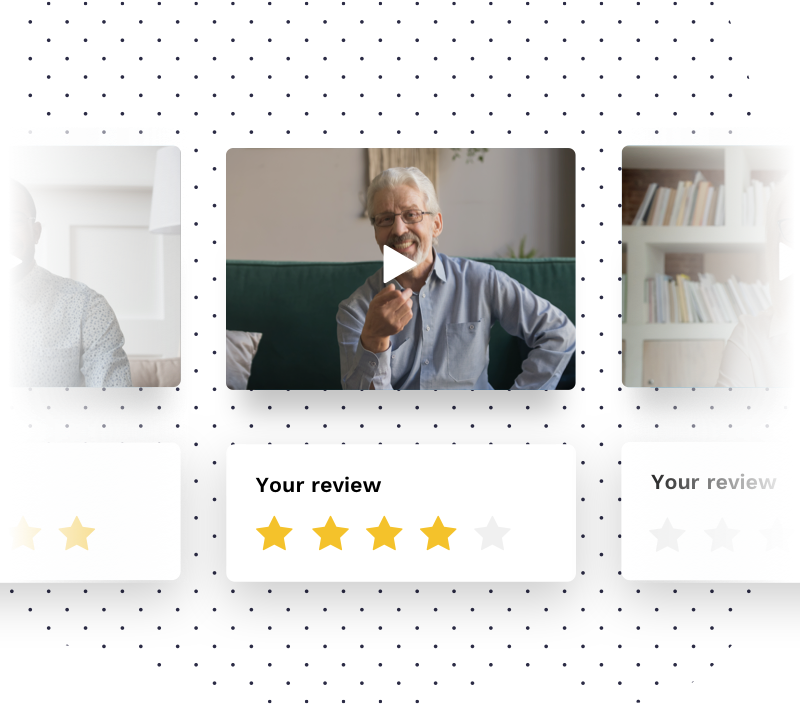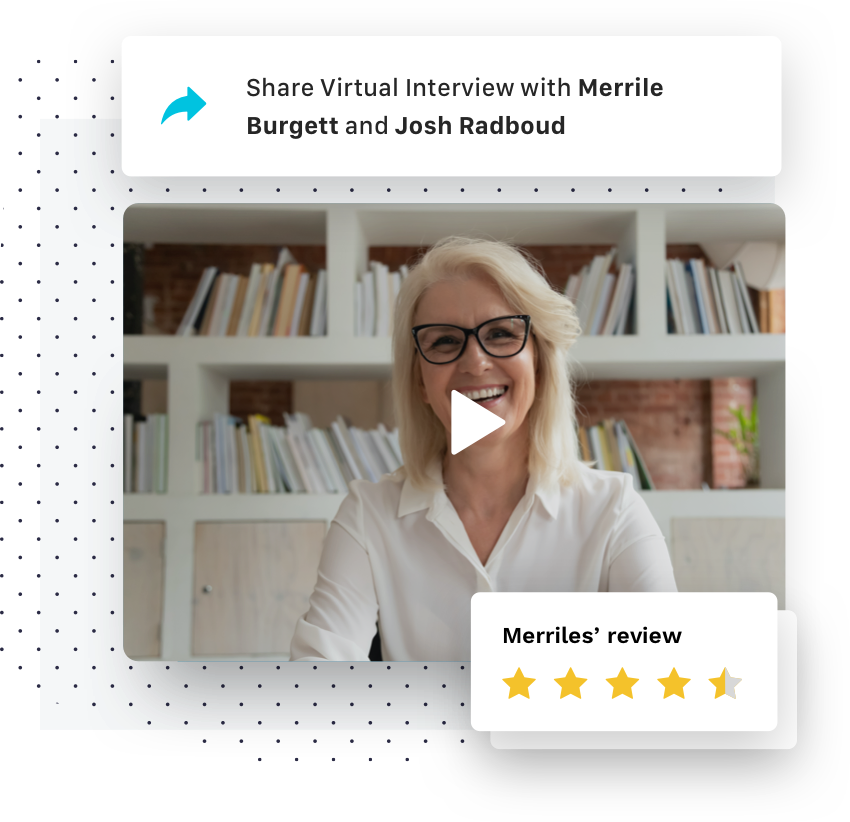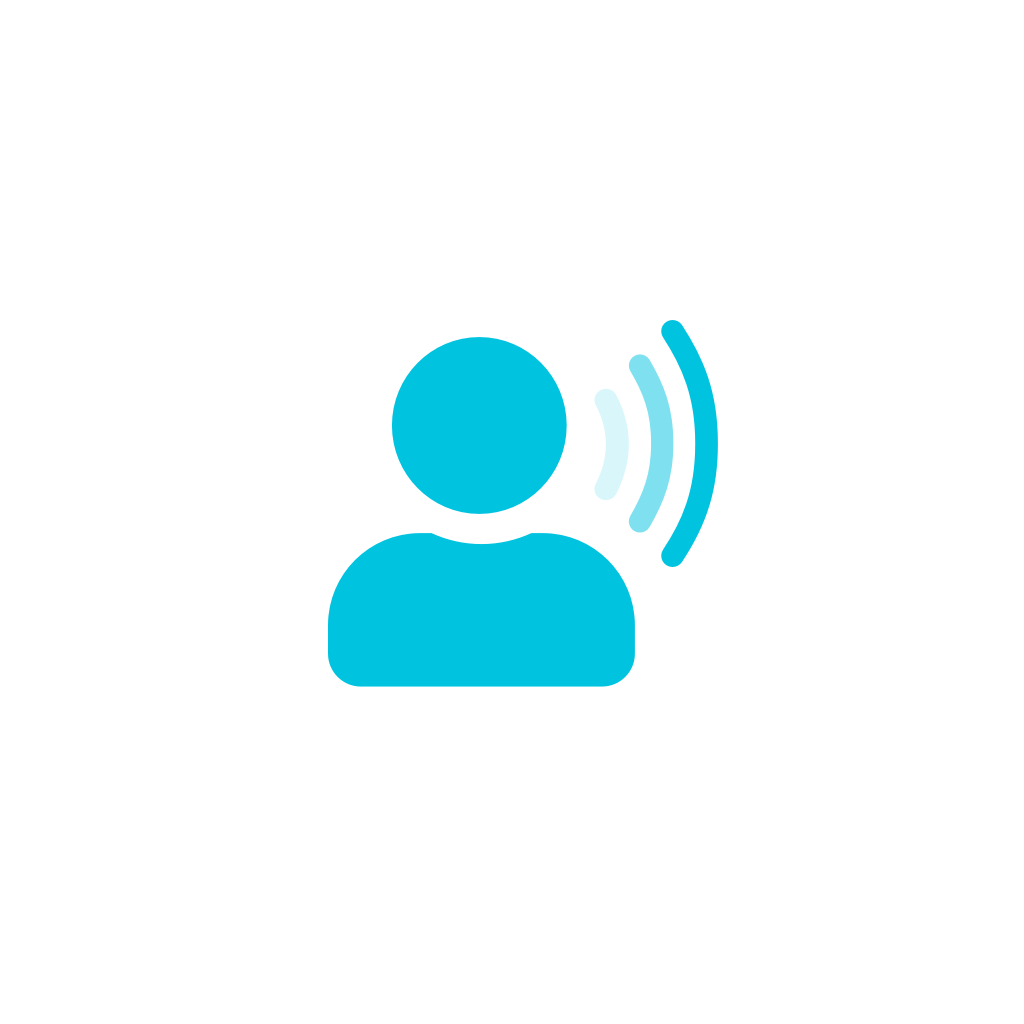Why use virtual interviewing?
Virtual interviewing is a great way to add a qualitative element to your pre-selection next to the assessment data on your candidates. Incorporating asynchronous video interviewing allows you to gain a well-rounded view of each candidate right from the start of your recruitment process, while speeding up your hiring efforts.
It lets you see every candidate that applies—even the remote ones from other parts of the world – without the hassle of scheduling a phone interview. You can get a sense for an applicant’s communication skills and gauge things like comprehension and critical role-specific skills from the very beginning.
Virtual interviewing at Harver
The virtual interviewing module within Harver lets you easily implement an asynchronous video interview in your preselection process. Upload your own videos or ask written questions and see how candidates answer them in recorded video responses.
Mix the virtual interviewing module with other Harver assessments to create a fully digital pre-selection process. Get a truly holistic view of each candidate by complementing assessment data with qualitative data from the interview.
*Virtual interviewing at Harver does not make use of automated decision-making or facial and/or micro-expression analysis technology. The video interview module is a qualitative add-on in addition to quantitative data obtained from other Harver assessments.
Speed up your screening
See more candidates in less time with the Virtual Interviewing module. Replace the standard laborious phone screening stage and allow candidates to be interviewed at every hour of the day.

Collaborate on the hiring process
Share the recorded responses with all team members involved and collaborate on the hiring process. That way, you get multiple opinions and screen more efficiently and effectively.
Ensure fairness through consistency
Ask the same set of questions to all job candidates and compare and evaluate their answers consistently. Every candidate gets a fair shot, and you can get a real sense for who they are in a quick and convenient way.
Hire the right candidate.
See our interviewing solution in action and discover the power of incorporating virtual interviewing in your application process.
FAQ
A virtual interview is a job screening interview that is conducted online. It’s a way to pre-select candidates in a more effective, efficient way than phone screening. Virtual interviews are not meant to replace face-to-face interviews—they’re meant to ease the pre-selection process and complement assessment data.
Here’s how it works: In a one-way, asynchronous interview, questions can be presented in either text or video form. Candidates record their answers and submit them for the recruiter or hiring manager to review at their convenience. One-way virtual interviews are also sometimes called on-demand video interviews.
There’s also the option to have two-way virtual interviews, where the candidate and interviewer are both live-streamed and talking in real time.
Cognitive ability assessments are a form of pre-employment testing that measure each applicant’s learning aptitude, problem-solving skills, critical thinking skills, working memory and more. Using cognitive ability tests helps companies assess candidates and predict the likelihood of on-the-job success, that is, how well each candidate picks up on new learnings, adapts to new work environments, makes important decisions, identifies solutions to problems and more.
Cognitive ability assessments are applied in a number of different situations to identify things like intellectual disorders, learning disabilities, impact of brain injuries, and signs of dementia. Employers also use cognitive assessments to test a job candidate’s abilities and predict how well they will perform a range of job-related tasks.
An asynchronous virtual interview is a part of a digital recruitment process. It is recorded at a candidate’s convenience, usually in a specified amount of time. A recruiter and/or hiring manager can then review the answers and share top candidates with team members for input on hiring decisions. The video is then included in the candidate’s profile.
Virtual interviews typically consist of up to 4 questions and candidates have around 2 minutes per question to record their answers. The question is displayed and then there is a countdown after which the recording begins automatically.
Bias is always a concern in recruiting. Harver’s virtual interviewing module includes blind hiring features like face blurring, which only allows recruiters to view the recording as a second step after an initial blind screening. The interview process can be completely standardized so that all candidates answer the same questions. Not everyone involved in the process has access to the full interview, which also helps eliminate bias.
Virtual interviews are popular mainly with employed candidates because they don’t have to undergo phone screenings while they are at work. One-way, asynchronous interviewing means they can do it at their preferred time without having to navigate scheduling ping-pong to find a time that works.
Candidates also like virtual interviews because they get to prepare their answers and are often allowed to re-record if necessary. That reduces the stress for them and makes the process more engaging. However, it’s essential to explain to candidates how the virtual interview is used in the pre-selection process and that it does not replace the face-to-face interview.
Assessments with strong levels of predictive validity simplify the selection process and improve the accuracy of results.
Recruiters use virtual interviews to learn more about candidates and complement assessment results as early in the recruitment process as possible. Virtual interviews are the closest thing you can get to meeting a candidate in a fully digital recruitment process. There are numerous benefits to digitizing your recruiting process, such as:
- Saving time. Eliminate the need to schedule phone calls and introduce the company each and every time around.
- Collaborating on hiring decisions. Develop a collaborative hiring process by allowing the possibility for multiple stakeholders to re-watch recordings.
- Ensuring consistency. All candidates are asked the same questions so you can compare their answers in a fair, consistent way.
- Reducing hiring bias. Prevent hiring bias with blind screening features like face blurring.
Virtual interviews are highly effective for gathering qualitative data about candidates to complement quantitative data and help recruiters gain a holistic view of a candidate early on in the recruitment process. Remember, virtual interviewing isn’t meant to replace face-to-face interviewing; it’s meant to replace the phone screening interview.
A virtual interview should be accompanied by data from other types of standardized assessments to gain a comprehensive understanding of a candidate’s characteristics and skills, such as cognitive ability or cultural fit.


